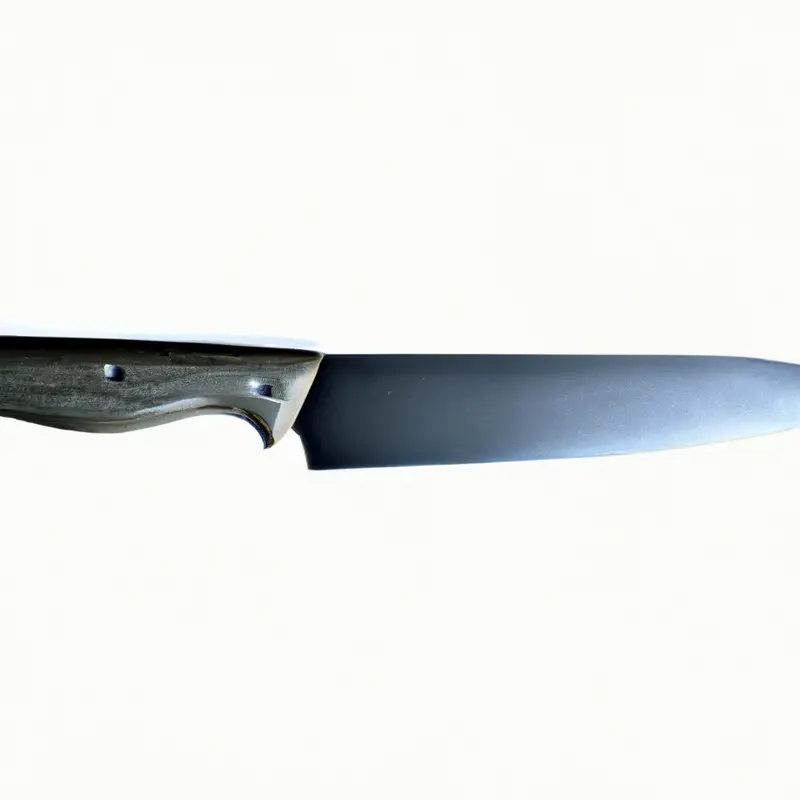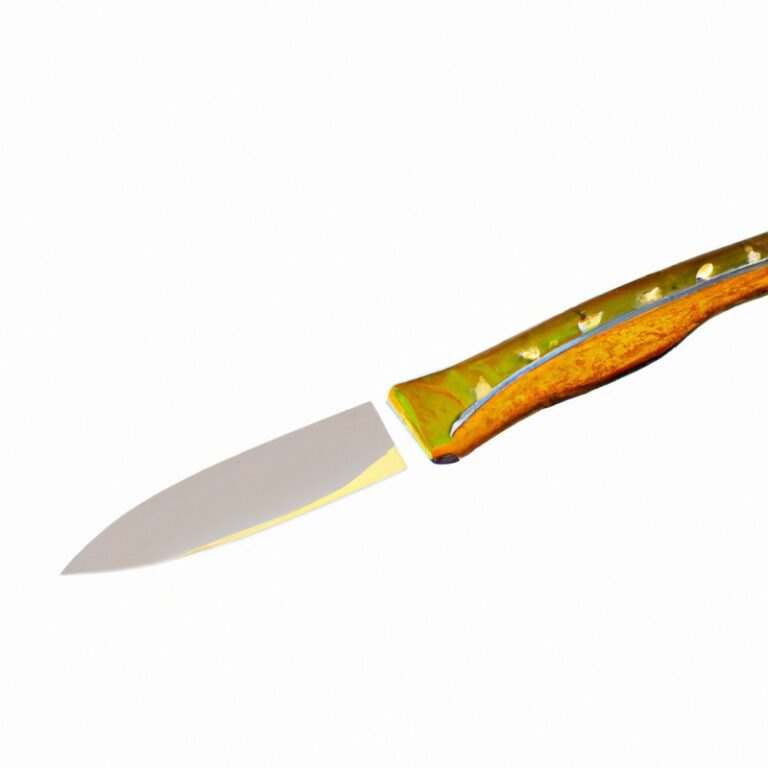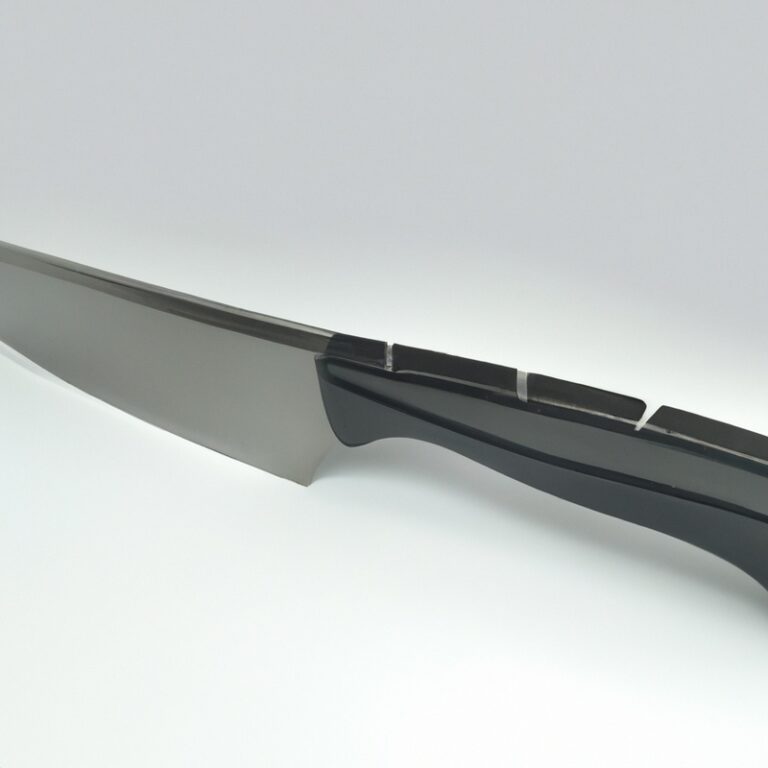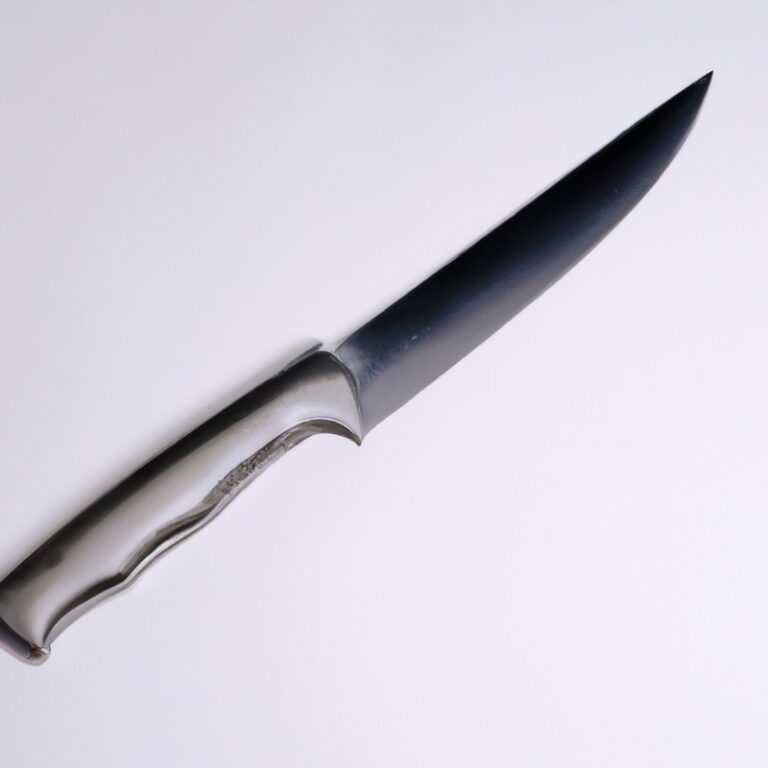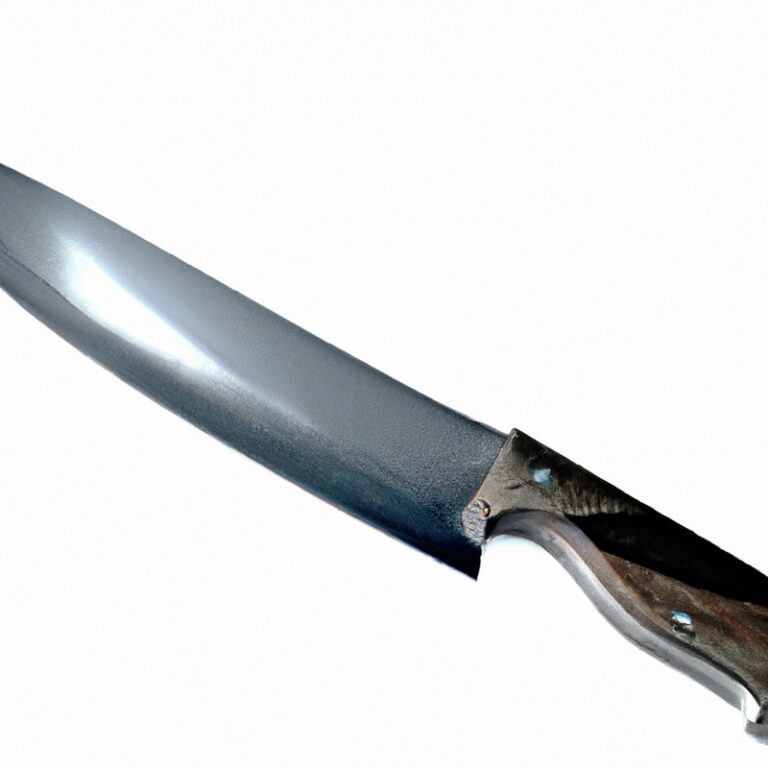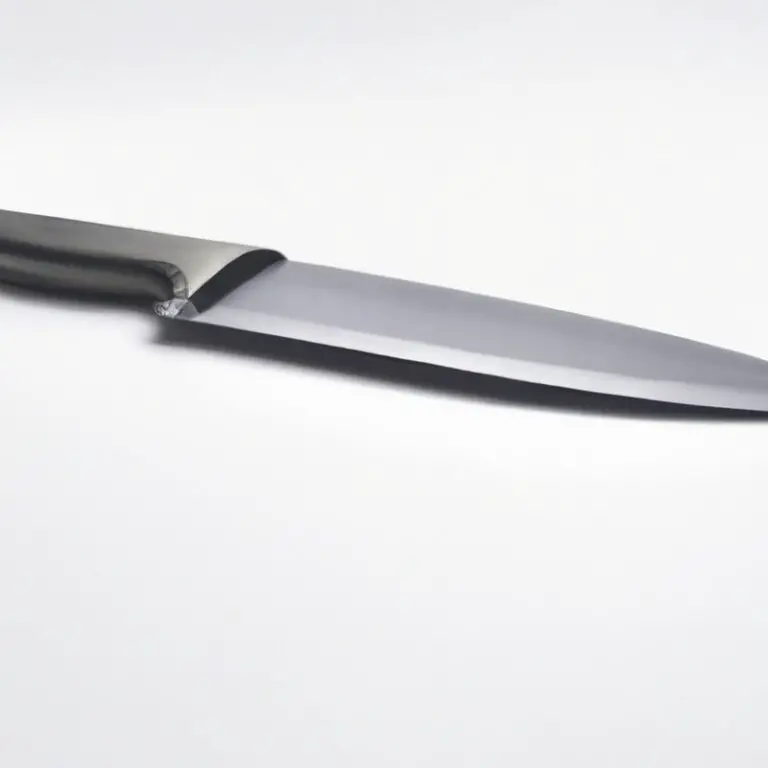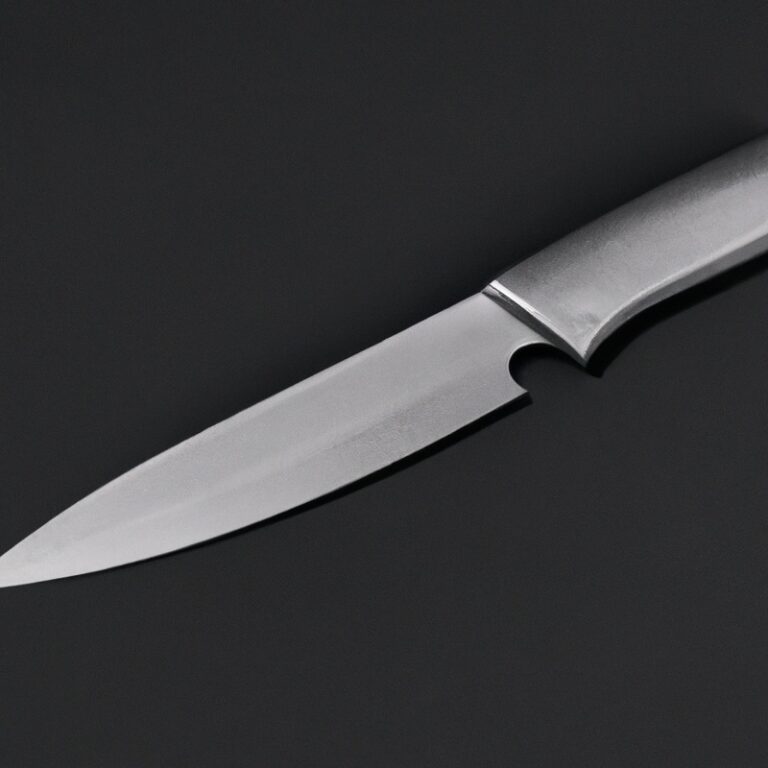How Can I Safely And Efficiently Slice Through a Loaf Of Crusty Sourdough Using a Serrated Knife?
Key Takeaways:
- Use a serrated knife with a long blade, approximately 8 to 10 inches.
- Apply gentle pressure and a sawing motion to cut through the crust without crushing the bread.
- Maintain a consistent slicing angle for clean, even cuts.
- Allow the knife to do the work and avoid applying excessive force.
Are you tired of the struggle and mess when it comes to slicing through a crusty loaf of sourdough with a regular knife? I know the frustration, but fear not! I’m here to share my expertise on safely and efficiently slicing through that delectable loaf using a serrated knife.
In this article, I will guide you through the importance of using a serrated knife for crusty sourdough, the right technique for slicing, tips for safety, and even how to maintain your serrated knife for longevity.
Get ready to revolutionize your bread slicing game and enjoy every slice of that perfect crusty sourdough!
| Steps | Safety Tips | Efficiency Tips |
| 1. Choose a serrated knife. | – Hold the knife securely to prevent slipping. – Keep fingers away from the knife’s edge. | – Use a long serrated knife for better control. – Look for a knife with sharp teeth. |
| 2. Hold the loaf with one hand. | – Make sure your fingers are safely away from the cutting area. – Take care not to squeeze the loaf too tightly. | – Use a bread board or stable surface for better support. – Position the loaf with the crust facing up for easier cutting. |
| 3. Position the knife at the top of the loaf. | – Be mindful of the knife’s position at all times. – Angle the knife slightly downward to create a clean cut. | – Start the cut with the tip of the knife, maintaining a steady pressure. – Cut in a smooth and sawing motion for better control. |
| 4. Slice through the loaf in one continuous motion. | – Keep the knife away from your body and others. – Use slow, deliberate motions to avoid accidents. | – Allow the knife to do the work; don’t force it. – Adjust your grip as needed to maintain control. |
| 5. Repeat the slicing process until the loaf is fully cut. | – Take breaks if needed to avoid fatigue or loss of focus. – Keep the blade away from your fingers. | – Clean the knife occasionally to remove any stuck dough or crumbs. – Practice regularly to improve your technique. |
Understanding the Importance of Using a Serrated Knife
Why a Serrated Knife is Ideal for Crusty Sourdough
A serrated knife is ideal for slicing through crusty sourdough because of its unique teeth-like edge. The serrations grip the crust and allow for a smooth and even cut without crushing the soft interior of the loaf.
This ensures that you can achieve clean slices without tearing or squishing the bread.
Additionally, the sharpness of the serrated edge makes it easier to penetrate the tough exterior of crusty sourdough, resulting in neat and precise cuts. Overall, a serrated knife is a must-have tool for anyone looking to slice through crusty sourdough efficiently and with minimal effort.
Preparing Your Loaf of Crusty Sourdough
Choosing the Right Sourdough Loaf
Choosing the right sourdough loaf is essential for a delicious and satisfying experience. Here are a few tips to help you make the best choice:
- Look for a golden-brown crust: A good sourdough loaf should have a rich, golden-brown crust. This indicates that it has been properly baked and will have a desirable texture.
- Check for a firm and springy top: Gently press the top of the loaf. It should feel firm and spring back when you release it. Avoid loaves that feel overly soft or doughy.
- Consider the weight: A heavier loaf generally indicates that it has a denser crumb and a more pronounced sourdough flavor. If you prefer a lighter texture, opt for a lighter loaf.
- Smell the loaf: Sourdough bread should have a distinctive tangy aroma. Take a moment to smell the loaf and see if the scent appeals to you.
By keeping these factors in mind, you can select a sourdough loaf that meets your preferences and enhances your dining experience. Enjoy!
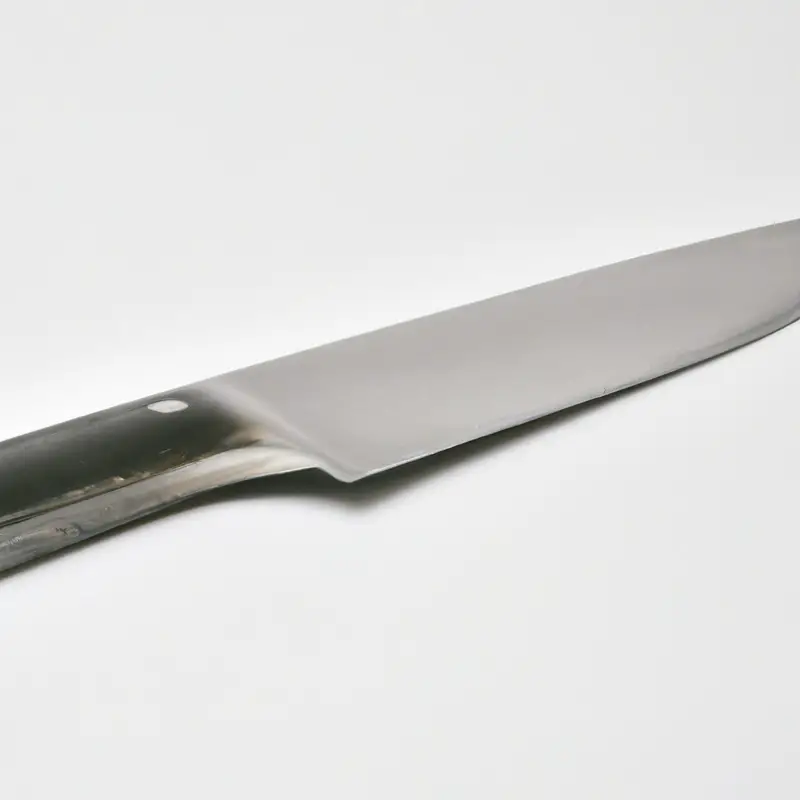
Allowing the Loaf to Cool
After you’ve baked your delicious crusty sourdough, it’s important to allow it to cool before slicing. Cooling the loaf allows the crust to become firmer, making it easier to slice through without squishing the bread.
Simply place the loaf on a wire rack and let it cool for at least 30 minutes to an hour.
This will ensure that your slices come out neat and clean, and the texture of your sourdough remains intact. So, be patient and resist the temptation to slice into your loaf right away!

Mastering the Right Technique for Slicing
Holding the Serrated Knife Properly
To hold a serrated knife properly for slicing through a loaf of crusty sourdough, grip the handle firmly with your dominant hand. Place your index finger on the top of the blade for better control and stability.
Keep your other hand away from the cutting area to prevent accidents.
Remember to maintain a steady grip and apply even pressure as you slice through the loaf.
Applying Even Pressure When Slicing
When slicing through a loaf of crusty sourdough, it’s important to apply even pressure to achieve clean, uniform slices. This ensures that the bread doesn’t get crushed or torn apart in the process.
To achieve this, hold the serrated knife with a firm grip and use a gentle sawing motion.
Start at the edge of the loaf and slowly work your way through, maintaining steady pressure throughout. By doing so, you’ll be able to slice through the crusty exterior without compromising the texture of the bread inside.
Tips for Safely Slicing Through Crusty Sourdough
Using a Sawing Motion
To safely and efficiently slice through a loaf of crusty sourdough using a serrated knife, it’s important to utilize a sawing motion. Start by placing the knife near the top crust of the loaf and gently saw back and forth with a gentle downward pressure.
Avoid using excessive force, as this can crush the delicate crumb inside the bread.
Remember to clean the knife after use to maintain its sharpness and longevity. Happy slicing!
Avoiding Excessive Force
When it comes to slicing through crusty sourdough, it’s important to avoid using excessive force. Putting too much pressure on the knife can lead to accidents or squished slices.
To prevent this, make sure your serrated knife is sharp and in good condition.
Start by lightly scoring the crust of the bread with the knife and then use a gentle sawing motion to cut through. If you encounter resistance, don’t force it.
Instead, take a break and readjust your grip or angle.
Remember, it’s better to take your time and slice safely than to rush and risk injury.
Cleaning the Knife After Use
Cleaning the knife after use is an essential step to maintain its longevity and ensure food safety. Here’s how you can clean your serrated knife effectively:
- Rinse the knife under warm running water to remove any visible food particles.
- Gently scrub the blade with a sponge or dishcloth and mild dish soap.
- Pay special attention to the serrated edges, using a toothbrush or small brush to remove any stubborn residue.
- Rinse the knife thoroughly to remove all soap residue.
- Dry the knife with a clean towel or allow it to air dry completely before storing.
- Avoid using abrasive cleaners or scrubbing pads, as they can damage the knife’s blade.
- Regularly cleaning your knife after use will keep it in top condition and ready for your next sourdough slicing adventure.
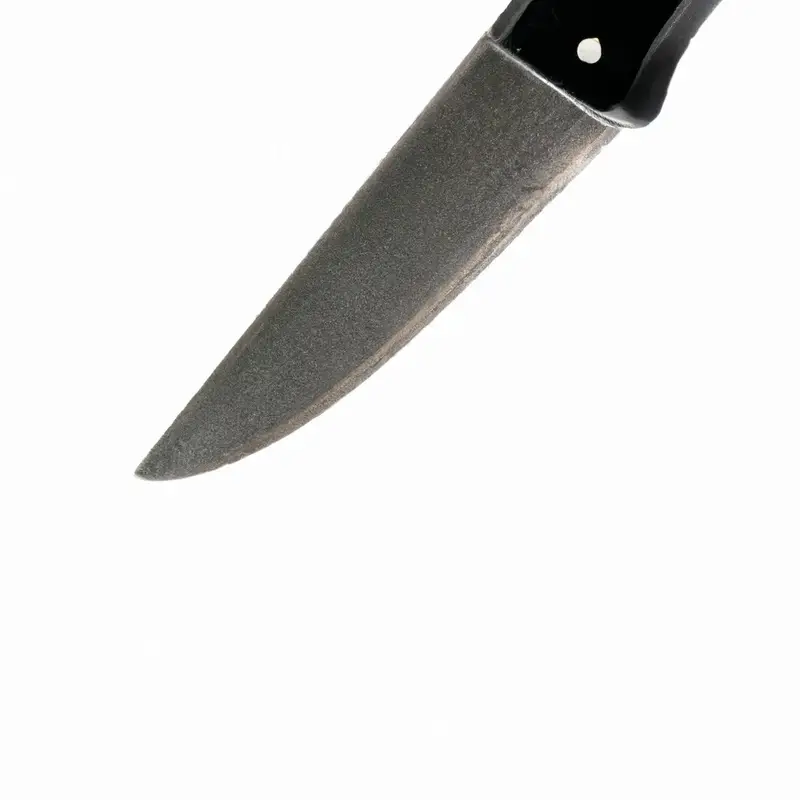
Maintaining Your Serrated Knife for Longevity
Honing the Serrated Knife Regularly
To keep your serrated knife sharp and ready for slicing through crusty sourdough, honing it regularly is key. Honing is a simple process that helps realign the knife’s blade, ensuring it remains sharp over time.
To hone the serrated knife, use a honing rod or sharpening stone with a flat surface.
Gently run the rod or stone along the serrations, maintaining a consistent angle. Repeat a few times on each side, and your knife will be back to its slicing best.
Regular honing will prolong the life of your knife and ensure smooth, effortless slicing every time.
Storing the Knife Properly
To store your serrated knife properly and maintain its longevity, there are a few simple guidelines to follow:
- Clean the knife: Before storing, make sure the knife is clean and dry to prevent any moisture or food residue from causing damage.
- Use a knife block or sheath: Using a knife block or sheath will protect the blade and prevent accidents in the kitchen. Make sure the knife is secured and protected from other utensils.
- Avoid storing in a drawer: Storing the knife in a drawer can cause it to rub against other utensils or surfaces, resulting in dulling or chipping of the blade.
- Keep it away from moisture: Moisture can lead to rust, so avoid storing the knife in a damp environment such as near a sink or in a dishwasher.
Explore Different Recipes for Crusty Sourdough
Traditional Sourdough Sandwiches
Traditional sourdough sandwiches are a delicious and versatile option for any meal. The tangy, chewy bread pairs perfectly with a variety of fillings.
Some classic options include ham and cheese, turkey and avocado, or roasted vegetables.
You can also get creative with different spreads and condiments to add extra flavor. The crusty texture of the sourdough bread holds up well to the filling, giving you a satisfying bite every time.
Don’t forget to toast the bread for a bit of extra crunch!
Sourdough Bruschetta Variations
There are endless possibilities for delicious sourdough bruschetta variations. You can top your toasted sourdough with classic tomato and basil, or get creative with toppings like avocado, goat cheese, or smoked salmon.
Try experimenting with different herbs, vegetables, and cheeses to create your own unique flavor combinations.
Sourdough’s tangy flavor and crusty texture make it the perfect base for these mouthwatering appetizers. So go ahead and get creative in the kitchen – the possibilities are endless!
Final Verdict
Using a serrated knife is essential when it comes to safely and efficiently slicing through a loaf of crusty sourdough. The serrated edge allows for better grip and control, preventing the delicate interior from getting squished.
By holding the knife properly and applying even pressure, you can achieve clean and precise slices.
Remember to use a sawing motion instead of applying excessive force. Maintenance is key for longevity, so regularly hone the knife and store it properly.
With these tips, you’ll be able to enjoy your crusty sourdough with ease and finesse.

